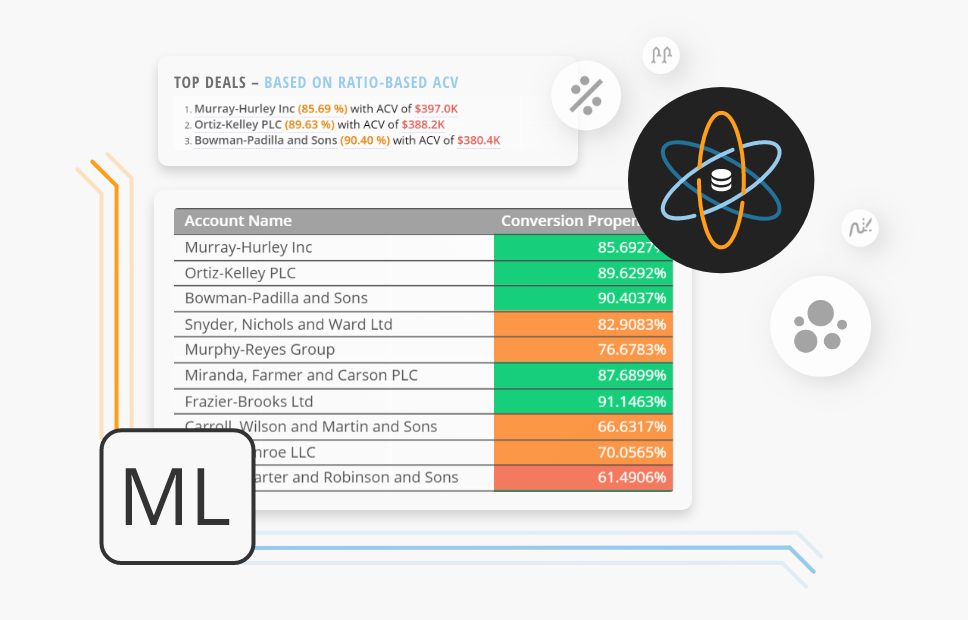Understanding the Essentials of AI and Machine Learning
If you’re involved in business, then you’ve heard the terms “machine learning” and “artificial intelligence” being thrown around for years. While they may seem to be used interchangeably, they aren’t the same thing. Both are branches of data science, and both work with data. Both seek to automate and speed up human processes by imitating the way human beings think. But, machine learning and artificial intelligence each play a separate and important role in how they work with data.
Machine learning.
Machine learning is what it sounds like–a way to teach machines how to learn as humans do. Machine learning algorithms look closely at data structure to identify patterns and commonalities. They can then make classifications and predictions, providing valuable insights for business intelligence.

Artificial intelligence.
You could think of machine learning as the power behind artificial intelligence (AI). AI uses machine learning to solve complex problems and automate tasks, all while taking advantage of mathematical precisions to avoid human error. It is often used as a broad term in the business community to refer to the goal of using data science to mimic the way humans learn and think.

Why is artificial intelligence important for business?
Artificial intelligence is quickly emerging as a new “must-have” for modern businesses. That’s all because of big data. The amount of data that customers and businesses are producing and the amount of that data that organizations are collecting is growing exponentially. About 10 years ago, most businesses were using one or two systems that involved digital data and files. Now, organizations are using thousands–if not millions–of files. In order to get any value from all that information, businesses need a way to collect, organize, and analyze that data. And, that system needs to be able to scale as a brand grows.
Data experts can use a form of data catalog to inventory all their data. Then, tools like machine learning can help them map and draw recommendations from the data sets. Typically, working with machine learning models takes a high level of data science expertise. This level of expertise naturally creates silos in an organization–those who can work with the data and those who can’t.
Artificial intelligence breaks down silos by making it possible for more people to access and understand data so they can make more informed decisions. AI makes self-service data platforms possible. It fills in gaps in technical know-how by automating processes and completing data tasks that would take humans hours in minutes. This makes it possible for every department to become truly data-driven and increase overall business intelligence. It also relieves the pressure and demand on data teams, leaving the data experts to address more complicated problems instead of spending time processing data.
Tools like Domo harness the power of AI technologies–which includes machine learning, natural language processing, and predictive analytics–to help businesses get insights faster and guide decision making. AI makes it possible to automate data delivery and use deep learning to generate text summaries of data charts along with outlier detection, distribution, correlations, and other insights that humans may have not noticed otherwise. And, with Domo’s automated machine learning (AutoML) AI and machine learning can be easy for everyone.

How can businesses use AI?
While there are near unlimited technologies and tools that businesses can use to incorporate AI into their organization, there are three main areas that AI supports:
Automating processes.
AI is very useful in automating tasks. Those tasks can be physical or digital, but they are often administrative or otherwise repetitive. Guiding customers through troubleshooting like replacing a lost credit card or updating contact information are two examples.
Gathering insights.
AI can be used to find patterns in large volumes of data and translate that into actions, alerts, and predictions. This use of AI includes functions like predicting what customers will purchase, detecting financial or insurance fraud, and personalizing advertising.
Engaging with humans.
AI is increasingly being used to engage with customers and employees. Chatbots and smart assistants are perfect examples. Through AI, businesses can provide 24/7 customer support and help recommend health plans to employees based on their personal health histories.
How will the use of AI evolve in the future?
In the next few decades, artificial intelligence will transform the way we work. While many fear that AI will eliminate jobs, a more accurate statement would be that it will change what jobs look like. By taking advantage of data and using it to fuel AI that automates processes, gathers insights, and engages with customers and employees, businesses free up humans to do what they do best–harness creativity and make decisions. Organizations that begin to take advantage of AI for their data now will be set up for success and a competitive edge in the future.
Check out some related resources:

Machine Learning: Creating Value from Data

Modern BI for All Field Guide: Operationalizing Modern BI Best Practices and Principles






